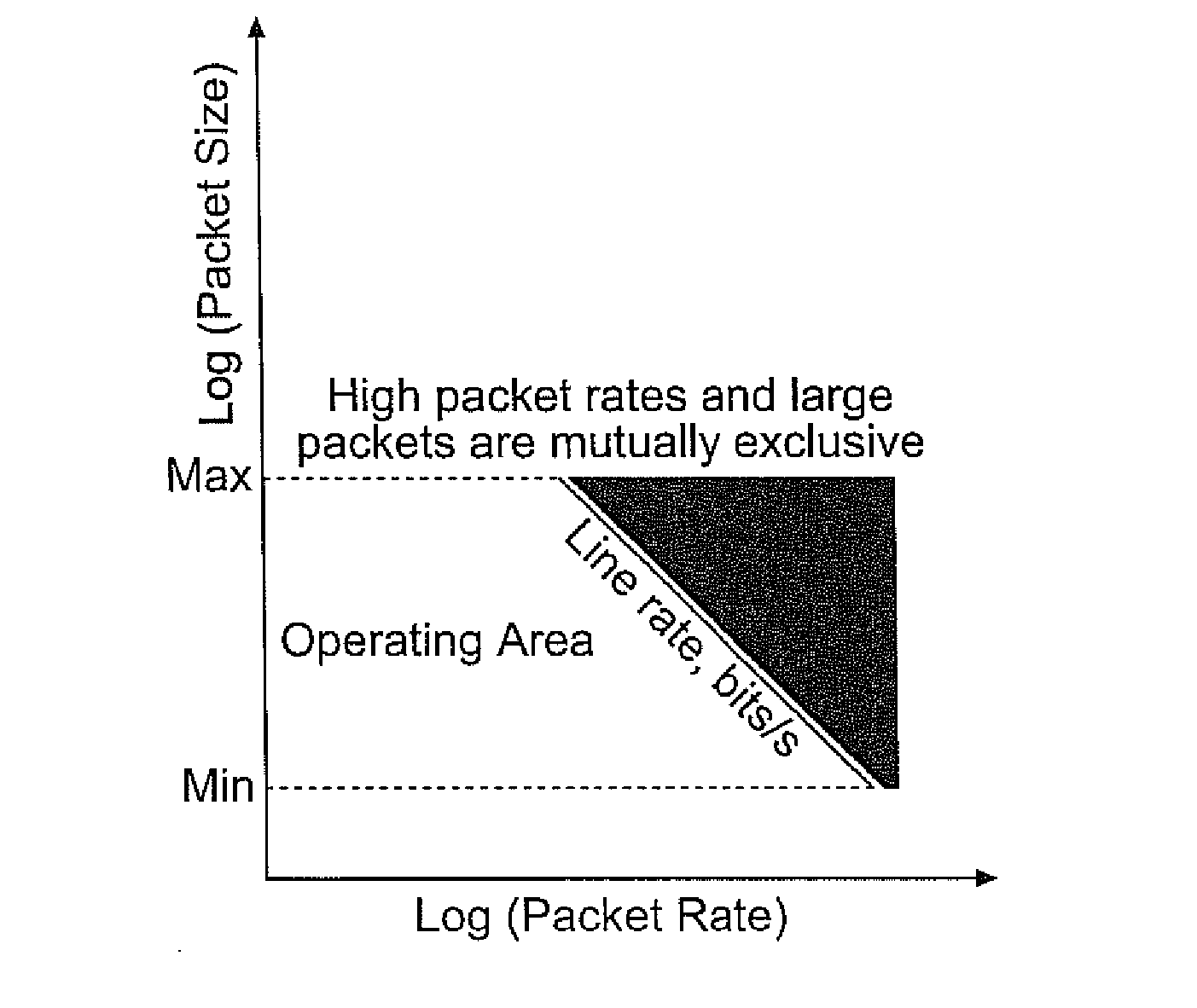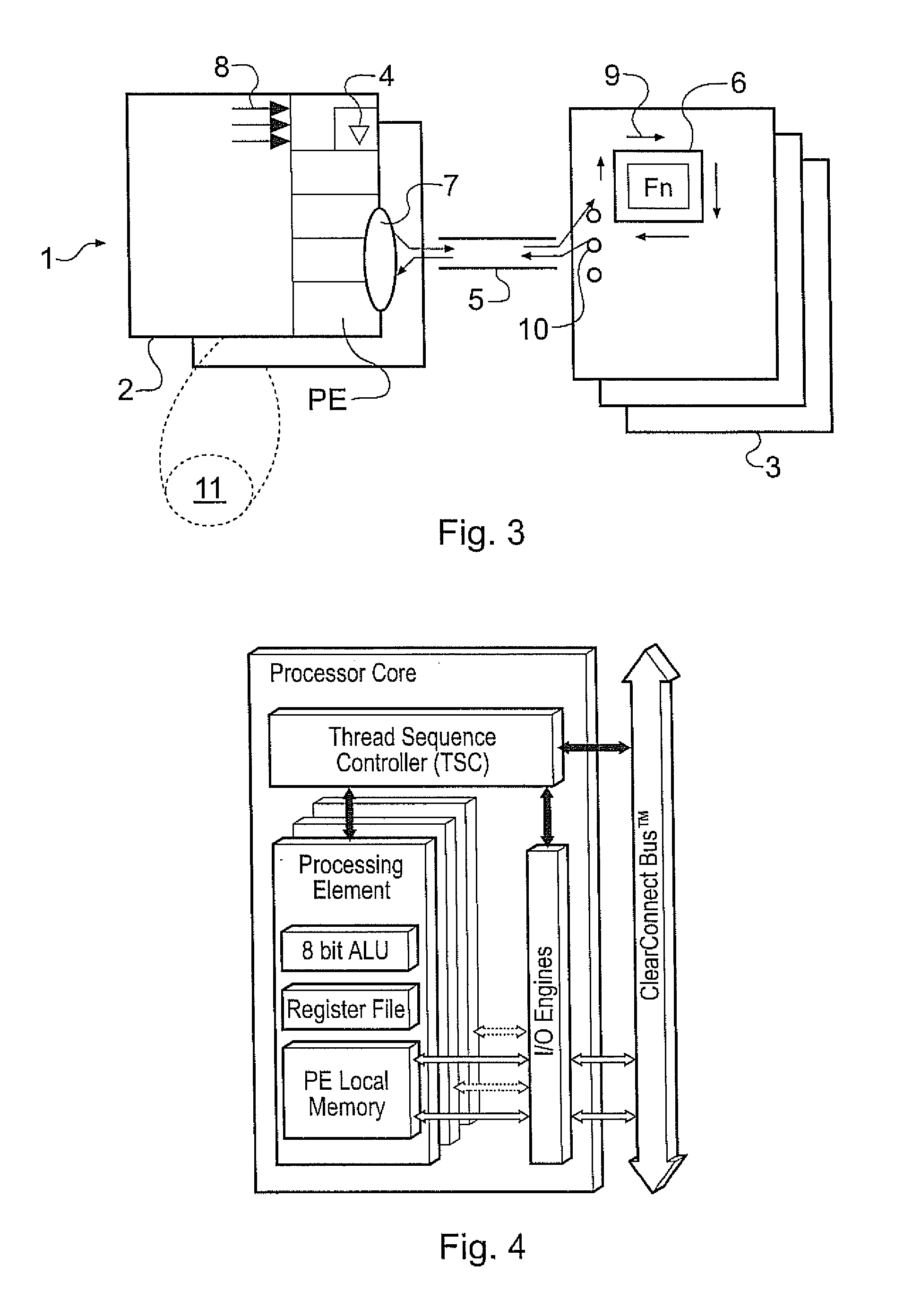Data Processing Architectures
a data processing and data processing technology, applied in the field of data processing architectures, can solve the problems of retaining the inherent overhead of computational tasks, limited complexity of processing algorithms, and high hardware and software costs, and achieves the effect of optimizing processing elements and reducing hardware overhead
- Summary
- Abstract
- Description
- Claims
- Application Information
AI Technical Summary
Benefits of technology
Problems solved by technology
Method used
Image
Examples
example tle
usage
[0199] As the design is based on the use of multiple memory banks, it is possible to increase the number of banks, increasing the effective memory bandwidth and thus the overall performance. The number of LEs present in the unit should then be increased. The number chosen should saturate the memory to obtain maximum performance.
[0200] The design does not require use of esoteric process technologies, allowing it to use state of the art processes, obtaining improvements in clock speed and memory density as early as possible. For example, using embedded SRAM on a 0.13-micron process, the TLE instance described previously is expected to take 110 mm2 for 2 Mbytes of RAM. The external RAM interfaces would require just 100 pins per bank. It is also possible to include more than one instance of the TLE block within a design.
Encryption Functions
[0201] The MTAP processors perform encryption and decryption functions at Gbit rates entirely in software. For faster line rates, the proces...
an embodiment
of the Invention
[0231]FIG. 6 shows a simple sub-system example implementation for network layer processing of 100M packets per second at 40 Gbit / s that may be fabricated on a single chip. It includes classification, routing and modification functions. It is implemented as a software solution with a hardware Table Lookup Engine. The clock speed is 400 MHz.
[0232] In particular, The MTAP processor communicates via the intelligent “ClearConnect” bus with the Table Lookup Engine (LTE), the Global Semaphore Unit (GSU) and the Control Plane Interface (CPI). Traffic flow follows the general path as described in the aforementioned co-pending application, in that data input passes through a Network Input Processor (NIP) and Distributor into the bus, whereas output-directed data passes through a Collector and a Network Output Processor (NOP) before passing into an output O / P. The NIP and the NOP are both described in the copending application.
PUM
 Login to View More
Login to View More Abstract
Description
Claims
Application Information
 Login to View More
Login to View More - R&D
- Intellectual Property
- Life Sciences
- Materials
- Tech Scout
- Unparalleled Data Quality
- Higher Quality Content
- 60% Fewer Hallucinations
Browse by: Latest US Patents, China's latest patents, Technical Efficacy Thesaurus, Application Domain, Technology Topic, Popular Technical Reports.
© 2025 PatSnap. All rights reserved.Legal|Privacy policy|Modern Slavery Act Transparency Statement|Sitemap|About US| Contact US: help@patsnap.com



